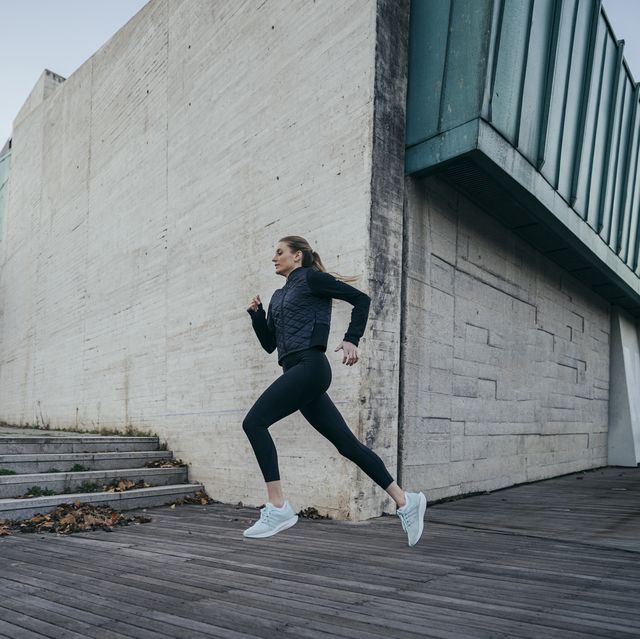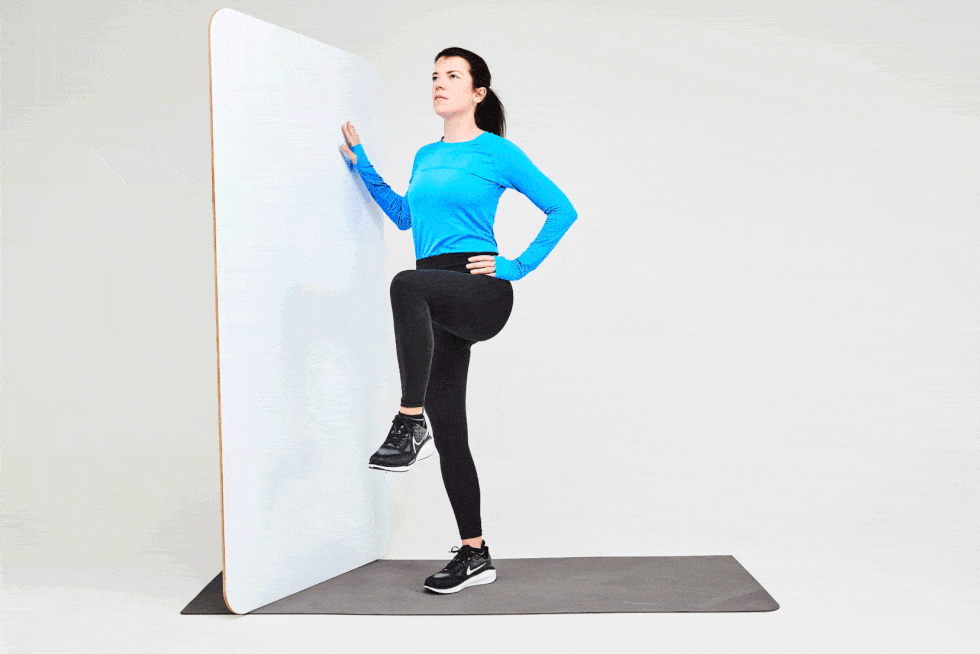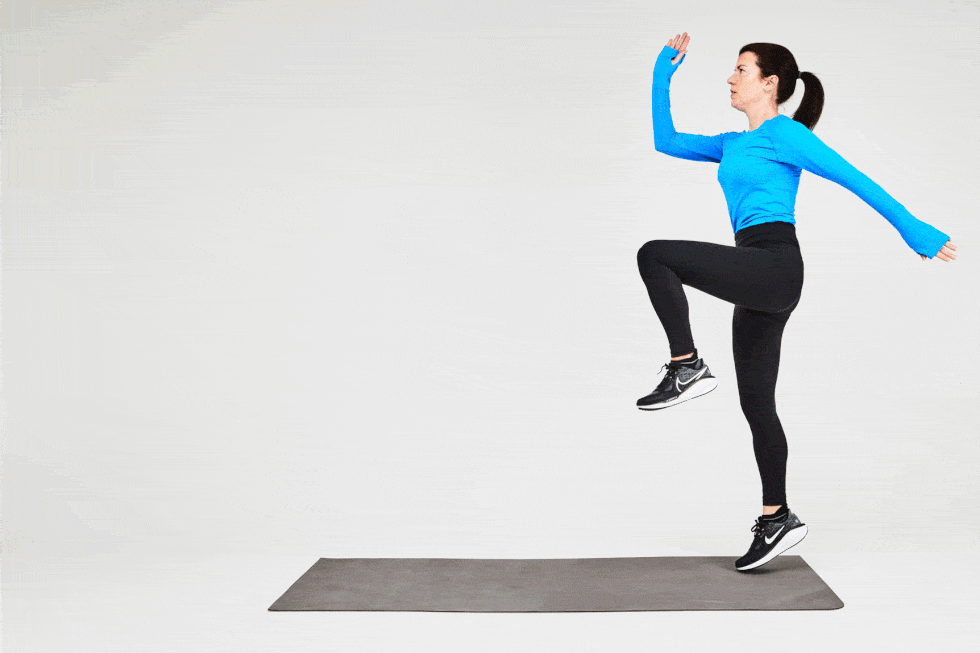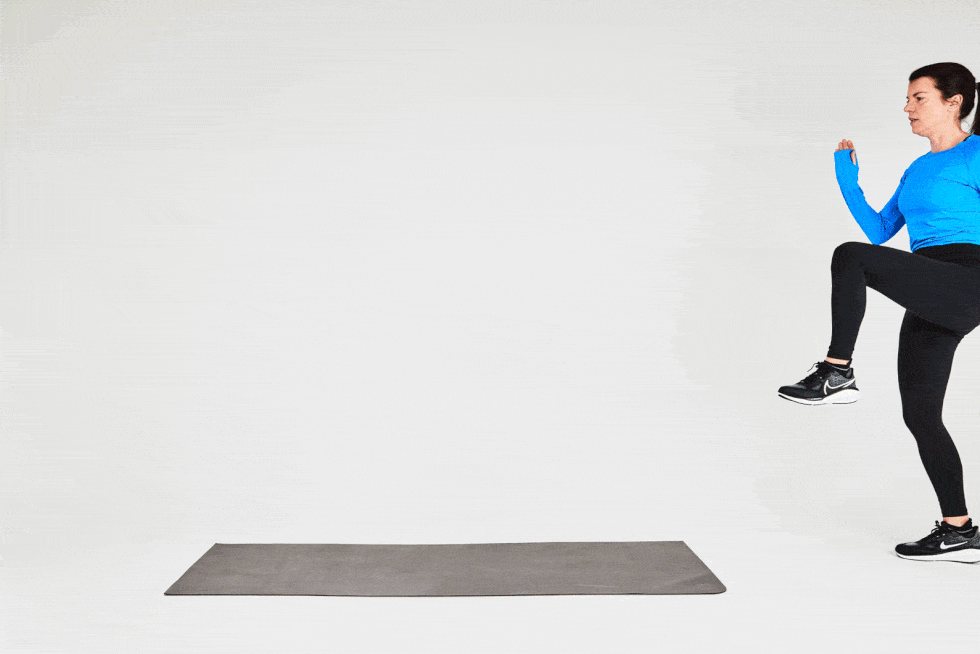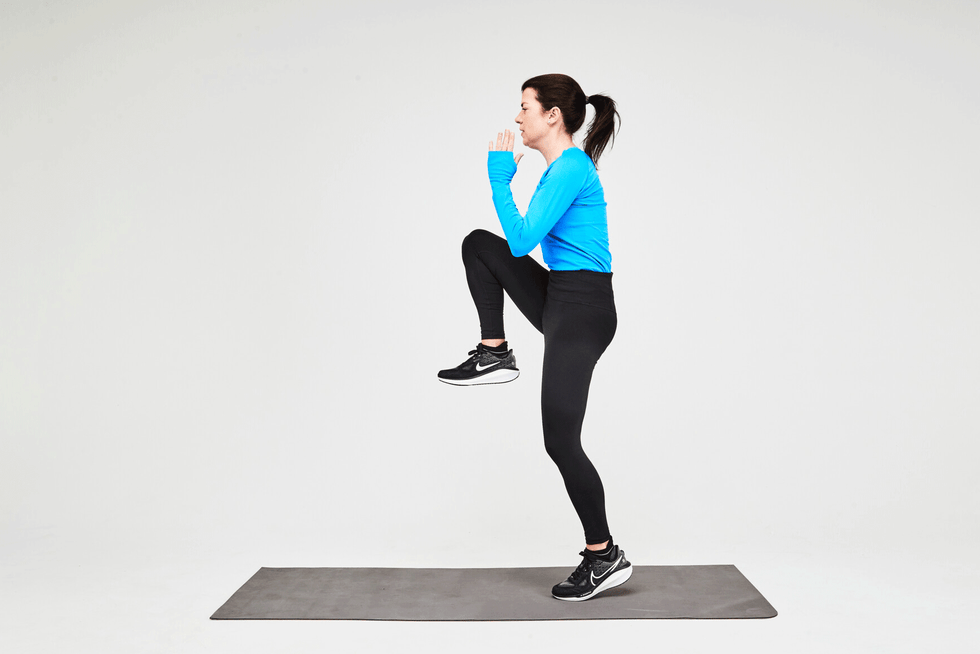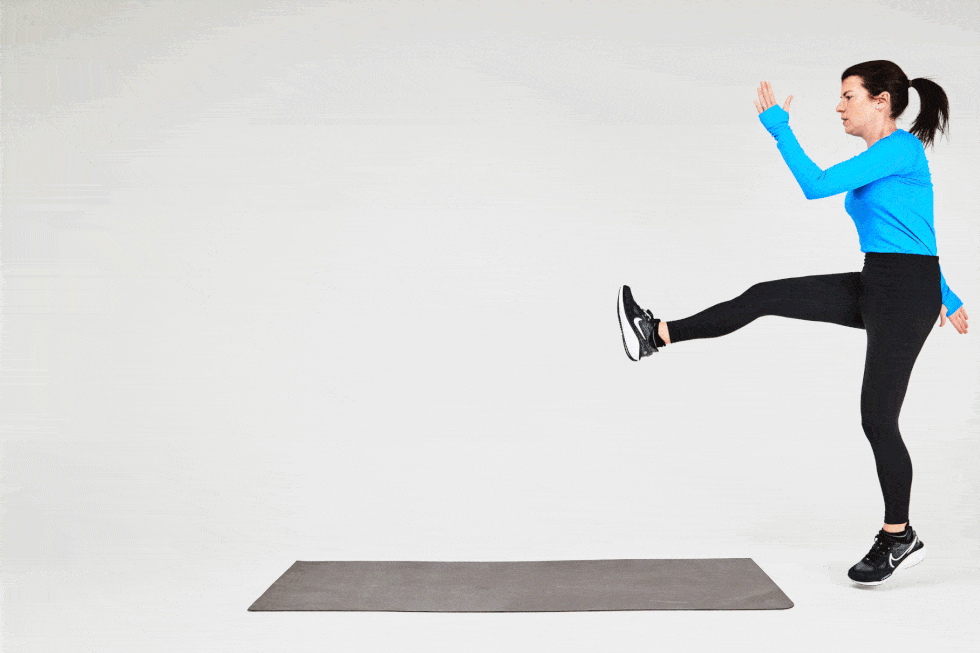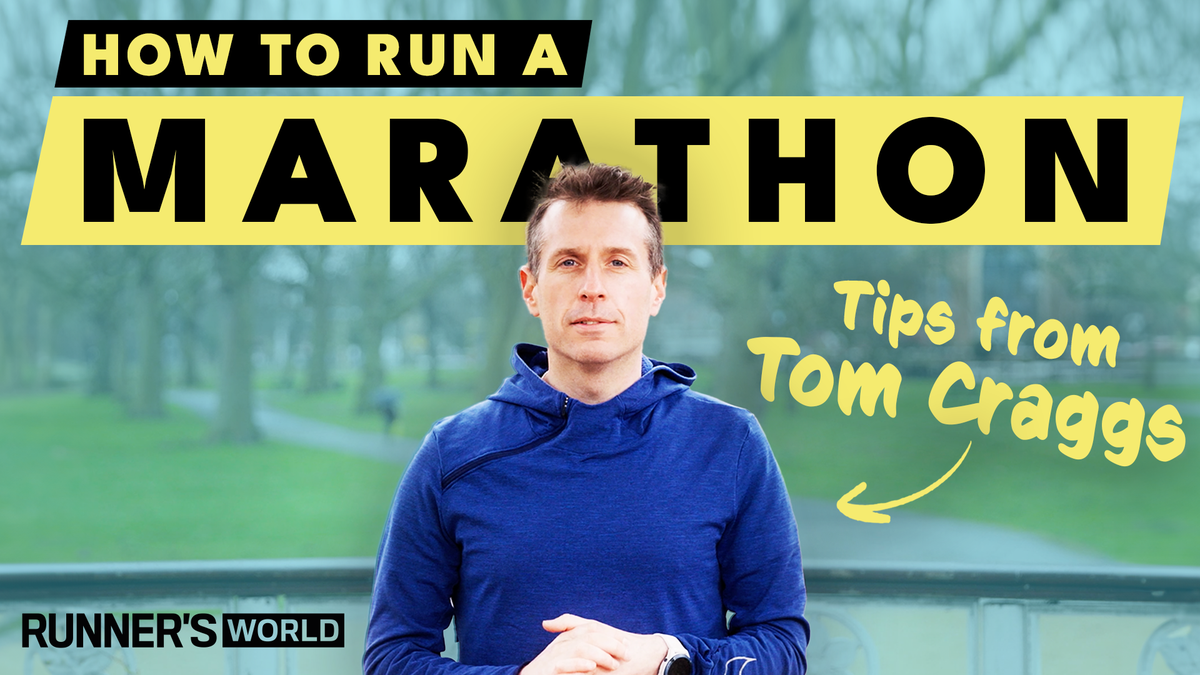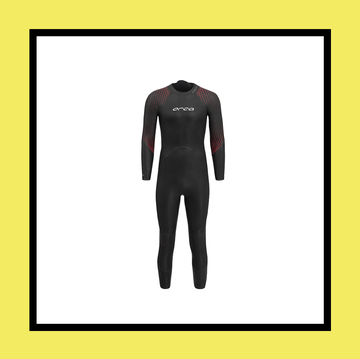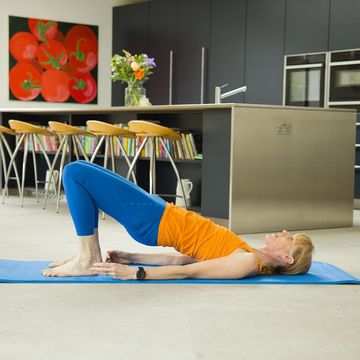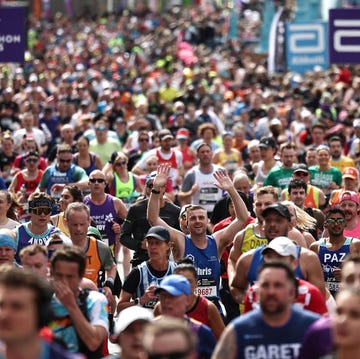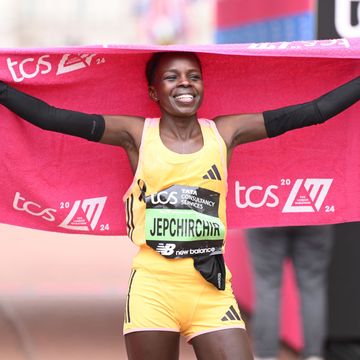If you thought running drills were just for track athletes or elites, you'll need to think again. Any runner who wants to build their speed and endurance can – and should – make drills a regular part of their running practice.
'Optimal running form allows the runner to maximise speed while minimising the effort required to sustain that speed,' says Kevin Levi-Goerlich, a clinical specialist in orthopaedic physical therapy with the Johns Hopkins Rehabilitation Network and USA Triathlon Level II coach. 'Most runners, whether they're training for their first event, returning to running after injury, or chasing a new PB, could benefit from performing drills.'
Levi-Foerlich recommends that runners practice a few drills as frequently as their running schedule allows. 'The better a runner is with these movements, the more likely a meaningful change in running form will occur,' he says. He suggests that runners follow up a warm-up run or walk with 5-10 minutes of drills, before then starting the main part of the workout – especially if this involves any intervals with increased intensity.
What are the benefits of running drills?
You'll be surprised how much runners can gain from a few simple warm-up moves.
For a start, drills that incorporate plyometrics can help to slow down age-related performance loss, in the same way that regular strength training can. Levi-Goerlich also notes that drills can also play an integral part in the rehabilitation process for runners returning from injury, and help to restore full function in the body.
Research backs this up, too. A study published in the Journal of Strength and Conditioning Research, for example, found that participants who performed dynamic stretches before a treadmill workout were better able to sustain a hard effort for longer than those who didn’t.
How should I do running drills?
Detailed below are five top pre-run drills from Levi-Goerlich and Marcus Chambers, a speed coach and founder of Triple G Speed in Atlanta, USA, who is also training for the 400m Olympic Trials.
These drills mimic the way your body moves on the run and teach you how to run more powerfully. 'Ideally, drills replicate the requirements of running and challenge the body beyond those requirements,' says Levi-Goerlich.
Chambers adds that drills help to fire up the muscles in your hips, glutes and hamstrings so they’re ready to perform. If you neglect your warm up, you'll increase your risk of injury while decreasing your workout performance.
It's also worth paying attention to your running mechanics as you move from your drills to the main part of your run. 'While practicing these drills is good, runners often stop thinking about mechanics or the quality of their movement once they have completed their drills and started their workout,' says Levi-Goerlich. He encourages runners to stay mentally engaged with the components that the drills focus on – like foot positioning, being light and fast off the ground and coordinating the upper body in a smooth manner – so they can optimise their running form.
Running drills to add to your warm up
1. Wall drill
Why does it work?
This drill focuses on strengthening and increasing range of motion through your hips. This is important for runners, as your hips generate power for explosive movements. 'Range of motion is important for runners to create smooth, efficient strides, which will help them to cover more ground,' says Chambers. With limited strength in your hips, you'll have difficulty reaching your maximum running speed.
How to do it:
- Stand about an arm’s length away from a wall, with your right side facing it. Place your inside hand on the wall to balance yourself.
- Lift your outside (left) knee to at least 90 degrees.
- Make a circular motion by bringing your knee out to the side, then back toward glute, then forward again.
- Repeat.
- Do 3 sets of 10 reps, then switch sides.
2. 'A' skip
Why does it work?
'This is a low-level plyometric [exercise] that trains a runner to coordinate upper body motion in conjunction with the lower body. It encourages landing with the foot underneath the knee, preventing overstriding,' says Levi-Goerlich, who adds that this exercise also stimulates a snappy push off from the ground. 'Coordinating arm movement with leg movement helps to enhance timing and efficient use of the arms,' he adds.
How to do it:
- Stand with your feet shoulder-width apart.
- Drive your right knee up to hip height while driving your left arm forward and right arm back, skipping forward as you do so.
- Drive your right knee back down and immediately drive your left knee up, this time while driving your right arm driving forward and left arm back. Keep your body upright and don’t lean back.
- Continue alternating sides. As you start to get the form, pick up the pace.
- Repeat 4-6 times, back and forth, for about 30m.
3. 'B' skip
Why does it work?
'This slightly more complicated pattern [compared to the 'A' skip] challenges the upper body to maintain stability while making forward progress,' says Levi-Goerlich. It also activates the lower body.
How to do it:
- Stand with your feet shoulder-width apart.
- Drive your right knee up to hip height while driving your left arm forward and right arm back, skipping forward as you do so. When your knee reaches hip height, kick your foot forward and straighten your knee.
- Re-bend your knee and drive your foot back back down.
- Immediately repeat on other side, driving your left knee up and kicking out while your right arm drives forward. Keep your body upright and don’t lean back.
- Continue alternating sides. As you start to get the form, pick up the pace.
- Repeat 4-6 times, back and forth, for about 30m.
4. High knees
Why does it work?
This movement activates your glutes, hamstrings, hip flexors, calf muscles and ankles. Chambers also says it is important for form as it helps to improve your muscular endurance, balance and coordination.
How to do it:
- Stand with your feet shoulder-width apart.
- Drive your right knee up toward your chest, as high as you can, while driving your left arm forward. Lean forward slightly.
- Immediately drive your right foot back down. Then, drive your left knee up, as high as you can, while driving your right arm forward.
- Continue alternating sides as you move forward.
- Repeat 4-6 times for about 30m.
5. Straight leg run
Why does it work?
This drill focuses on glute and hamstring activation, as well as ankle stability. These are the areas of the body that need to be connected to run in a fluid motion, says Chambers, which is why this movement is such a good one for runners.
How to do it:
- Start in a staggered stance with your right foot forward and left foot back.
- Push off from your front right foot and swing your back left foot forward with a straight leg, moving forward as you do so.
- Repeat on other side. Each time, land on your midfoot and swing your arms to generate more force on the ground to help you push yourself forward. Stay upright and don’t lean back.
- Continue alternating. As you start to get the form, pick up the pace.
- Repeat 4 times for about 50m.
